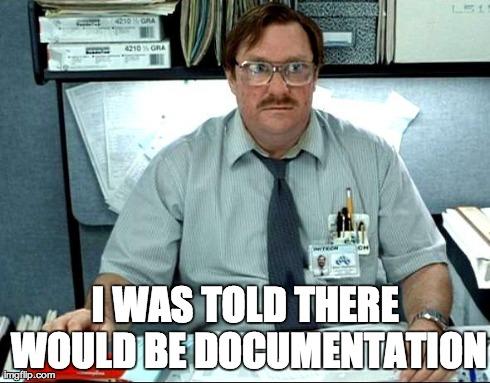Feel like documenting your processes is overwhelming?
When it comes to business operations, effective process documentation is the unsung hero that ensures harmony and efficiency throughout the business. Yet, all too often, teams can find themselves tangled up in a web of confusion and frustration when it comes to documenting their processes.
No matter if you’re a seasoned professional or a budding enthusiast wanting to get on the right track with their documentation processes, steering clear of the most common pitfalls is key to maintaining the smooth flow of your business engine.
From not involving the right people to using the wrong tools, in this article we’ll navigate through the most common challenges that can hinder your business from reaching its full potential.
So, fasten your seatbelts as we dive into the heart of process documentation, unraveling the complexities and highlighting solutions that can significantly impact the success of your business.
But first, what is process documentation?
Process documentation refers to the practice of systematically recording and detailing the steps, procedures, and activities involved in a specific business process. It is a comprehensive way of capturing information about how tasks are performed within an organization, ensuring transparency and providing a clear roadmap for employees to follow.
The primary goals are to provide clarity and transparency for your team, offering a consistent approach to how things are carried out and managed in your organization. They are particularly helpful for people new to their role, either during the employee onboarding process, or for people who have been promoted into new roles.
Process documentation can take various forms, including flowcharts, written manuals, visual diagrams, checklists, or a combination of these methods. The level of detail in documentation may vary depending on the complexity of the process and the audience for whom it is intended. Overall, effective process documentation is a cornerstone of organizational efficiency, fostering a culture of accountability, improvement, and adaptability.
Jared R Chaffee, Global Head of Geopolitical Risk & Crisis Response at Morgan Stanley, states without clear and easy-to-understand documentation, you could be setting your staff up to fail (Medium).

What kind of processes should be documented?
It can seem overwhelming when you’re trying to document processes! Where to start?!
Choose the 20% that are going to make the 80% difference in your business. And check out our article "The Top 10 Processes every business needs.".
This will completely depend on the nature of your business and the priorities that lie within it, but some of the most common processes to document include:
Accounting processes:
- Systematically record, summarize, analyze, and report financial transactions to provide accurate and timely information for decision-making and regulatory compliance.
Onboarding and training processes;
- Set your team up for success from day 1 and keep them engaged to maintain consistency in your business.
Customer support and service:
- Smooth out complaint handling and ensure your customers are onboarded for success.
Information technology processes:
- Ensure system maintenance for maintaining and updating IT systems.
Project management:
- Utilize processes for defining project scope, timelines, and resources.
Change management processes:
- Ensure change happens smoothly and efficiently with rollout across clients and team members without fail with change management processes.
Take a look at our templates gallery to see examples of how to get started with documenting processes in your business.
The 10 most common documenting mistakes
1. You see a mountain instead of a hill ⛰️
The first hurdle that many businesses come across is thinking that the task of documenting their processes is more of a mountain than a molehill. It seems like such a daunting thing to undertake, and so it gets pushed down the priority list. If this is an issue your team is coming up against, the best thing you can do is just take things one step at a time.
Take a look at some of the processes that are likely to have the biggest impact on your business – which are the ones that people ask you about the most? What causes the most headaches?
These are always a good place to start. Prioritization is the key to getting started, even if you only focus on one process at a time.
2. You forget to explain the ‘why’
When you start introducing documented processes, people will want to understand why you’re choosing to do things this way and how it will benefit them and make them more productive. In the nicest possible way, people tend to be quite egocentric when it comes to things like this, so make sure you appease this by explaining what’s going on and being clear about how it will impact them.
3. You are not getting feedback from those who execute❓
No matter how senior you are in your business, it’s unlikely that you’ll know every small detail of each process that goes on in every team. It’s really important for those who are going to be following the processes to be involved in creating them, giving suggestions and recommendations on the best way to set them up. Make sure every person in the platform gets a voice to make the processes better and contribute to a continuous improvement flow. You’ll find so much value doing this.
4. You only let managers write the procedures
Within most teams, there will be subject matter experts who can provide a huge amount of value when it comes to building out your process documentation. Make sure you include them in the procedure writing activities, finding the knowledge in everyone’s head and using this to build a strong foundation.
Get everyone into the habit of writing things down and sharing information throughout the business, giving everyone the opportunity to contribute.
5. You think that processes stifle creativity
We’ve had feedback from a few of our clients that they worry that introducing strict procedures will stop people feeling as though they can be creative.
This is just a misconception.
In reality, it’s the complete opposite of this. The more your team feels supported and guided in their processes, the more it will open doors for them and give them the headspace they need to be as creative as they like.
6. You are not assigning ownership
Many organizations put a huge amount of focus on getting things documented, but forget that their procedures need to move as the business does. One of the most important pieces is knowing who in the business will be responsible for reviewing and keeping the procedures up to date. By assigning ownership, you close any potential gaps and ensure that your documentation doesn’t become stale, always remaining relevant and useful. More than that, you encourage ownership and pride with subject matter experts. It’s a win-win!
7. Not leveraging documentation to its full potential
Documentation is a great way to bring clarity to your team and explain what’s expected of them – particularly helpful for onboarding new hires and training existing staff. But many businesses aren’t using them to their full potential.
By showing your team the amount of effort that you put into making them successful in their career, they are more likely to get a great first impression of the business, and feel more inclined to stay with you. Processes are also a way to maintain culture in a business, so it’s important that you instill every piece of documentation with core values in mind.
8. You think people will dig into folders to find what they need

Always bear in mind that you could create every single piece of documentation that your team needs, but if they can’t find it, it’s completely useless. If they can’t find it within a few seconds of looking, they’re just going to give up and go and ask someone.
According to research carried out by McKinsey Global Institute (MGI), an average team member spends about 20% of their working day searching for the information they need. This equates to a huge $10,000 per year for every employee who earns the average salary. So don’t make it hard for your staff! Make your documents visible, make them clear, give them the shortest route to find a solution.
9. You’re not utilizing the benefits of technology 💻
There are so many different options out there for documenting your processes, but yet many organizations aren’t taking advantage of this.
Technology helps;
- ✅ In actual documentation
- ✅ Speed up the process of documentation
- ✅ Team members access company knowledge
To find the best SOP Software, do your research and find the best solutions that work with your business.
10. Your documentation is boring and employee unfriendly
There is a reason no one reads your company documents. 72 page manuals are so 2010!
People don’t tend to get excited about documentation, but it’s such an important element for any organization. If you want your employees to read them and use them, make them as engaging as possible. Use gifs, images, videos – anything which will make them more inviting to look at and follow.
Bottom line? Get started documenting your processes today!
Documentation is SUPER important if you’re going to grow and scale your company.
BUT making these common mistakes is going to impact it’s efficacy in your business.
In addition to avoiding the common mistakes in documenting processes, remember to;
- 💡 Document for clarity! (and keep it standardized).
- 💡 Organize your documentation in a central repository or company wiki
- 💡 Make documentation accessible
Want to find out more? Take a look at the full webinar hosted by our Co-Founder, Gary Vanbutsele.







